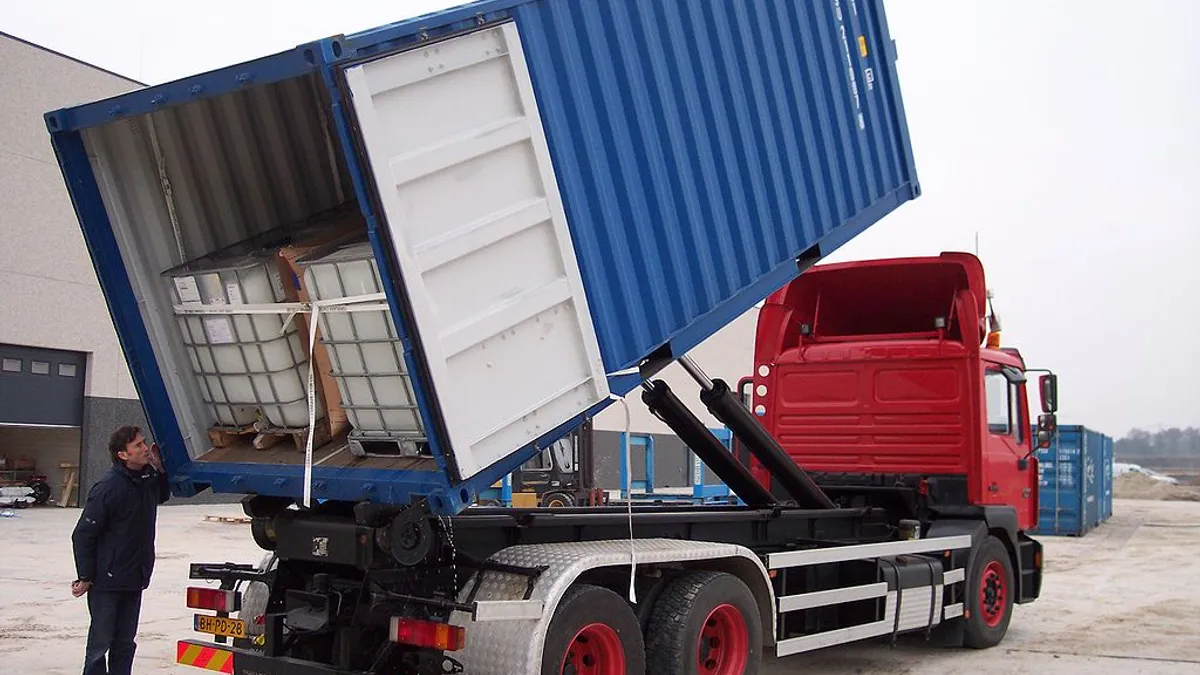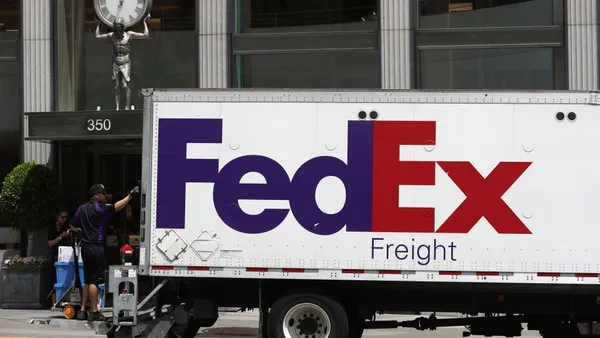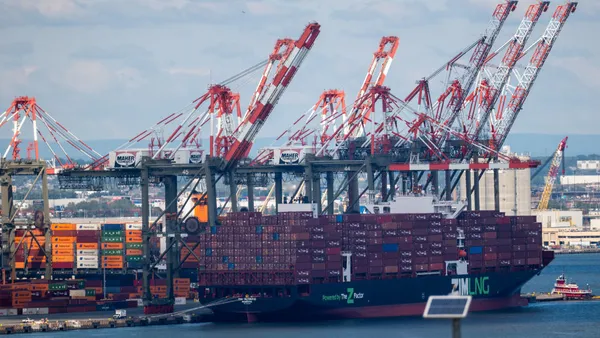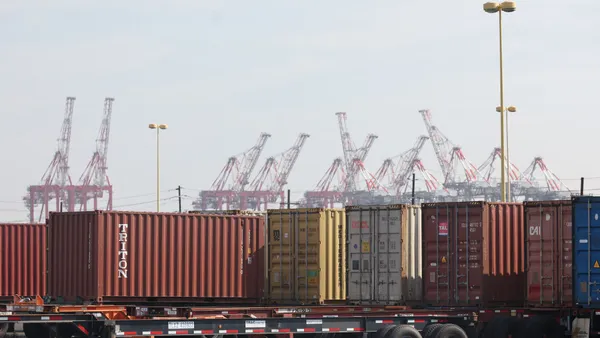Dive Brief:
- As of Jan. 15, The Port of New York and New Jersey's GCT USA LP-operated terminal required truckers to schedule appointments for morning loading and unloading, The Wall Street Journal reported last week.
- The goal of the reservations is to reduce congestion at the terminal and in the surrounding neighborhoods. Previously, truckers had to line up for hours to enter the terminal in the morning, but a test of the system revealed a 38% decrease in turn time with appointments.
- Similar programs have been implemented at the ports of Los Angeles, Long Beach, Oakland and Vancouver, and were tested at the Port of Virginia.
Dive Insight:
Ports across the U.S. have been making moves to increase efficiency, with dwell, turn time and port congestion being key targets for improvement.
An appointment system, for example, decreases both congestion and emissions at the ports by ensuring truckers do not crowd the ports during peak hours and spread pickup times throughout the day. Meanwhile, regulators are collaborating with port authorities to increase visibility, report dwell times and make the customs process more efficient in order to measure and increase efficiency. Finally, some ports, particularly on the West Coast, have taken to extending their terminal hours into the night to further spread out traffic.
Yet for all the benefits, some programs come with added costs or inconveniences for other stakeholders, like truckers, and have become a point of contention. In just one example, the pay for use night hour Pier Pass program at the Ports of Los Angeles and Long Beach has recently come under fire for what drivers argue is a misallocation of revenues. Drivers claim they pay extra despite poorer service than is received during the day. Similarly, appointment times inconvenience those drivers who are unable to schedule their loading time in advance.
Regardless, the attempt to control traffic and congestion is a positive move for terminals and ports as they seek to achieve more streamlined processes.












